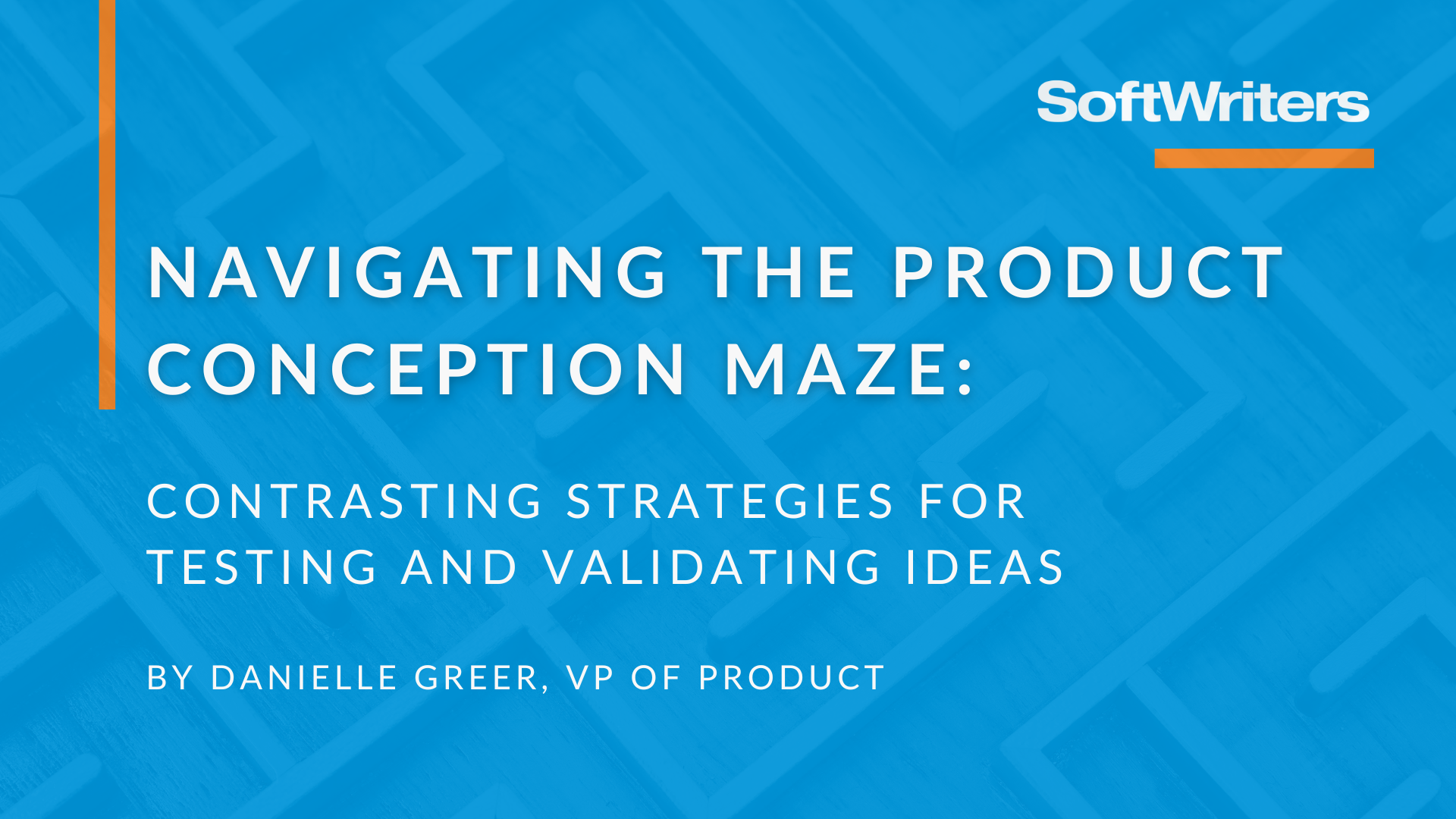Navigating The Product Conception Maze: Contrasting Strategies for Testing and Validating Ideas
By Danielle Greer
In the dynamic landscape of product management, choosing the right method to test and validate ideas during conception is crucial. Here's a quick dive into contrasting some approaches:
1. Rapid Prototyping vs. Comprehensive Research:
- Rapid Prototyping: Swiftly build a basic prototype to visualize the concept and gather initial user reactions. This approach emphasizes quick iterations and learning from user feedback in an agile manner.
- Comprehensive Research: Conduct in-depth market research, user interviews, and competitor analysis before diving into prototyping. This method prioritizes a thorough understanding of the market landscape and user needs.
2. Lean MVP vs. Feature-Rich Development:
- Lean MVP: Develop a Minimum Viable Product (MVP) with essential features to quickly test the core concept's viability. This approach minimizes resource investment upfront, allowing for adjustments based on early user feedback.
- Feature-Rich Development: Invest time and resources in building a more comprehensive product with a broader range of features. This method aims to deliver a polished product from the start but requires a longer development cycle.
3. Quantitative Metrics vs. Qualitative Insights:
- Quantitative Metrics: Leverage tools to track measurable metrics such as user engagement, conversion rates, and retention. This approach provides data-driven insights into user behavior but is not always an option for applications deployed on-premise.
- Qualitative Insights: Rely on methods like user interviews and surveys to gather subjective feedback and understand user experiences more deeply. This approach emphasizes the human aspect of product validation.
4. A/B Testing vs. Controlled Experiments:
- A/B Testing: Compare different versions of your product or features with real users to determine which performs better. This method allows for quick decision-making based on statistical significance.
- Controlled Experiments: Implement controlled experiments to isolate variables and analyze their impact on user behavior. This approach provides a more controlled environment for testing specific hypotheses.
Balancing these approaches depends on factors such as time constraints, resource availability, how your products are deployed/installed, and the nature of the product. Whether you're sprinting with a lean MVP or taking a comprehensive research-driven route, the key is to stay adaptable and responsive to the insights gained along the way.
What's your preferred strategy for testing and validating product ideas?
About Danielle Greer
In the late 90s, Danielle was part of the team that invented, refined, and delivered the first-ever on-site medication dispensing robot in the long-term care industry.
Danielle spent the next 20 years advancing to executive leadership at Advanced Pharmacy and Partners Pharmacy, where she most recently served as Vice President of Applications, Integrations, and Infrastructure. During that time, she led teams through the development and release of numerous products. In addition, she supported pharmacies through product development and technology adoption, workflow optimizations, and interface development that unlocked market growth.
Her passion for being a part of a shared leadership team developing products that save lives and focus on excellent customer engagement drew Danielle to join the SoftWriters team in 2022.
Danielle resides in Montana with her husband and finds relaxation in running and hiking in the beautiful mountain landscape and cooking delicious meals for friends and family. She is also a strong advocate for Veteran Affairs, which stems from both volunteer work at the VA hospital when she was going through paramedic school and having children who are veterans and actively serving.


